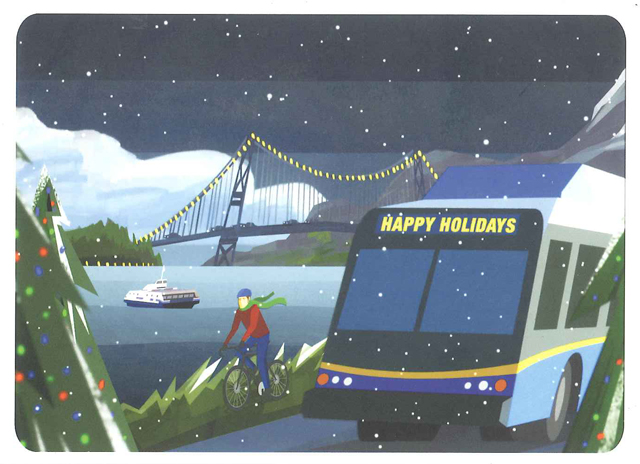Gearing up transit for snowy commutes
December 19, 2013
Gearing up transit for snowy commutes
December 19, 2013

Snow is in the forecast for tonight and we’re busy making sure our customers have a safe trip to work, school or even local mountains!
Here’s what you can do to prepare for a potentially snowy commute.
- Sign up for transit alerts so we can let you know if there are changes in the transit schedule.
- Follow our customer information team @translink or phone (604) 953-3333.
- Plan ahead with m.translink.ca and Trip Planner and give yourself extra time on your commute.
- Be aware that more people than usual take transit on the days when it’s snowing – common transit courtesy applies even more on these days!
- Dress warmly on those cold and snowy days when you’re heading out to get on transit!
Here’s what we’re doing to ensure our service runs efficiently in the snowy weather:
We’re always monitoring. Winter weather forecast monitoring means more staff can be quickly deployed and more trains can be added to service so riders can get on their way.
Buses
- Three trolley de-icer trucks will spray the entire trolley overhead system if there is a forecast risk of frost or ice.
- If needed, we’ll switch out articulated buses for traditional buses. Although articulated buses are great for turning and maneuvering throughout our streets in Metro Vancouver and allow for quick movement of large numbers of passengers, when traveling up hills or on streets that have poor conditions, the back halves are heavy which can create some traction problems.
SkyTrain
- The power rail is de-iced in the winter as well as the collector shoes on the trains. If it snows overnight, SkyTrain will run trains throughout the night to keep tracks clear.
- De-icing stations will be set up in covered areas and tunnels to prevent ice and snow compacts on the trains. Measures are also taken to make sure switches are protected from freezing.
- Staff will monitor the guideway for any large snow fall or drop-offs from the SkyTrain cars in order to keep the tracks clear.
SkyTrain (Canada Line)
- Anti-icing and sanding measures are used to ensure the power rail and tracks are clears of ice. In fact, three vehicles have modifications to provide ice-slicing, de-icing and sanding.
- New breaking modes for train cars – kind of like ABS on vehicles – to provide traction.
- There are special trains that can keep running on the system which further prevents ice-build up.
Do you have any tips for commuting in the snowy weather from a rider’s perspective?
Author: Borjana Slipicevic






>In fact, three vehicles have modifications to provide ice-slicing, de-icing and sanding.
I think more than a few of us would be interested in seeing a photo feature of that on the Blog!
Snow tires too, I hope!
It was a bad idea to stop equipping busses with snow tires and we felt it last year. I hope you have revisited the snow tire decision.
Hi Dave: Each fall, CMBC’s tire provider will provide sets of new tires for rotation for buses. Maintenance crew will go through each bus and change out any tires that are nearing the end of their useful life. CMBC Engineers have identified a Michelin Bus Tire as the best tire for the Metro Vancouver climate as it is rated for both mud and snow. Vancouver snow is typically very wet and will often plug up the tread on winter tires resulting in reduced traction. CMBC Michelin bus tires are better suited to handling the wet conditions experienced in Metro Vancouver. Commercial lug or winter tires are best suited for drier interior snow.
Please tell me that “new breaking modes” for train cars is a typo.